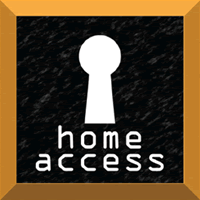The Big 10
Home Accessibility
- By David Kopf
- Jan 01, 2012
 Home access services and products are becoming an increasingly important segment of the HME market as considerable cuts to Medicare funding have slashed provider revenues and cash flow so severely that HMEs must find new revenue sources. To that end, providing home access products is gaining attention because they are mainly cash transactions and because there is an expanding market for them.
Home access services and products are becoming an increasingly important segment of the HME market as considerable cuts to Medicare funding have slashed provider revenues and cash flow so severely that HMEs must find new revenue sources. To that end, providing home access products is gaining attention because they are mainly cash transactions and because there is an expanding market for them.
We listed home access as a “must watch” segment for our 2011 Big 10, and not surprisingly, home access continued to receive considerable attention at shows like Medtrade Fall and VGM Group’s Heartland event, with full-scale homes erected at the event to demonstrate all the solutions available.
Reason being is that opportunities for home access abound. While mobility patients are an important home access market, they aren’t the only ones. Two key patient groups for home access are bariatric patients and older patients — and by older, we don’t necessarily mean geriatric patients. As many as 76 million people make up the Baby Boom generation, and they already started entering the age in which they will need DME. If there’s any doubt regarding their needs — either present or future — for home access, one need only look to a recent AARP study that showed that 89 percent of homeowners over the age of 45 prefer to remain in their homes, yet 80 percent of that population will require special housing and care needs.
Moreover, the members of the Baby Boom are also caring for their aging parents. Those two needs, combined with the relative wealth of baby boomers, means they are willing and able to pay for more expensive homecare solutions, such as accessibility.
Turning to bariatric patients, this patient has a variety of accessibility needs, and represents a growing portion of the U.S. population. According to the Centers for Disease control there are now 72 million Americans that are obese. In terms of the number of patients that are morbidly obese, another study puts that figure at 9 million.
Also, since bariatric patients or aging Baby Boomers already use a variety of HME products and service, many providers have a strong relationship with them already and can grow those existing patient relationships into new accessibility avenues.
But tapping into these access opportunities will require good partnerships. Home access can involve serious remodeling and home installation work that providers might not necessarily have the staff expertise to provide.
Fortunately, there are resources for ensuring that providers have good staff knowledge and capabilities, and certification that let them ensure they are partnering up with the right firms to handle the kind of remodeling work that is often associated with major home accessibility jobs.
VGM Group Inc. established the Accessible Home Improvement of America to provide a network of properly trained home access providers for patients needing their services. As a result AHIA has created the Certified Environmental Access Consultants (CEAC) designation for providers in its network and provides online training to providers interested in obtaining the certification.
Also, When it comes to remodeling, savvy providers will seek out the right partners, such as those contractors that are credentialed by the National Association of Homebuilders as a Certified Aging-In-Place Specialist (CAPS).
But remember, providing home access does not necessarily mean a provider has to be a soup-to-nuts home access business. There are ways to ramp up. As a provider gains expertise and builds the right partner relationships, it can start with simpler offerings. For instance, a provider can start with bath safety items and then expanding into other territory such as access ramps, stair-lifts or other patient lifts. Then, eventually it can dive into contracting remodels.
No matter how you look at it, providers need to drive new revenues from sources other than Medicare, while leveraging the reputations and marketplace relationships they have built over the course of their businesses. For that reason, home access will continue to be a key opportunity providers will need to explore in 2012.
This article originally appeared in the January 2012 issue of HME Business.
About the Author
David Kopf is the Publisher HME Business, DME Pharmacy and Mobility Management magazines. He was Executive Editor of HME Business and DME Pharmacy from 2008 to 2023. Follow him on LinkedIn at linkedin.com/in/dkopf/ and on Twitter at @postacutenews.